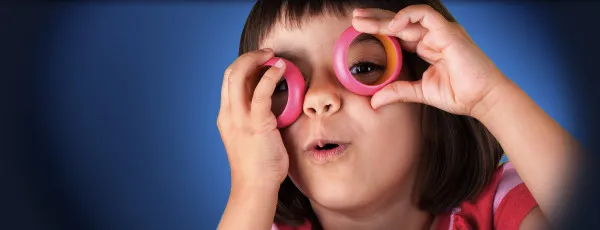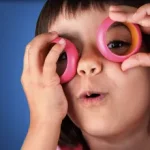Monitoring your baby’s overall development is not only important but also an extremely fun and fulfilling experience. From the first word to the first step, every small detail brings happiness and a sense of deep satisfaction to the parents. Observing your child’s development of eyesight is of utmost importance needless to state the reason for it. Babies learn to see over a period of time and are not born with all the visual abilities they need in life. It is vital to detect any problems beforehand to ensure babies have the opportunity to fully develop the visual abilities they need to grow and learn. Parents should be agile and should be watchful of any signs of eye problems. At birth, babies can’t see as clearly as older children or adults. Following are some milestones to watch for in child’s vision development.Birth to four months: Up to about 3 months of age, babies’ eyes don’t focus on objects more than 8 to 10 inches away from their faces. Around this time, eye-hand coordination begins to develop as the infant starts tracking moving objects with his or her eyes and reaching for them. For the first two months of life, their eyes are not well coordinated and may appear to be crossed. This is usually normal. However, if an eye appears to turn in or out constantly, an evaluation is necessary. Babies should begin to follow moving objects with their eyes and reach for things at around three months of age. Five to eight months: By this time, control of eye movements and eye-body coordination skills continue to improve. Depth perception is not until around the fifth month and it is now when a child sees a three-dimensional view of the world and begins to see in depth. It is generally supposed that babies have good color vision by five months of age. Nine to twelve months: It is the time when generally a child should start using his eyes and hands together. By twelve months, most babies will be crawling and trying to walk. Parents should encourage crawling as it helps the child develop better eye-hand coordination. Babies can judge distances fairly well and throw things with precision by this age. One to two years old: By two years of age, a child’s eye-hand coordination and depth perception should be well developed. They recognize familiar objects and pictures in books and can scribble with crayon or pencil.If your child follows this development scale, then there are fewer chances of visual deformities at the developing age. However, it is essential to note that the rate of development is different in every child and it might take a little longer than what is generally expected. If you observe exponential delays or any other deviations or issues, then it is best advised to consult an child eye specialist immediately. At Centre for Sight, we offer pediatric ophthalmology for all kinds of visual problems in infants and children. *The views expressed here are solely those of the author in his private capacity and do not in any way represent the views of Centre for Sight.





